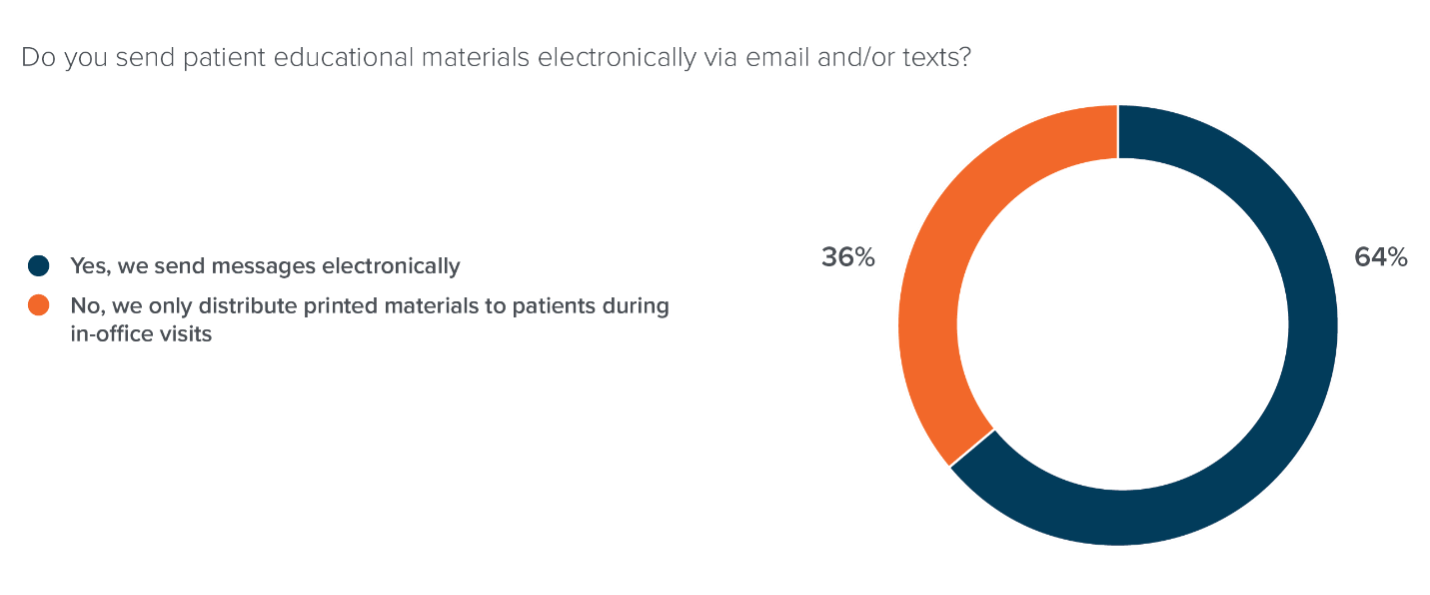
According to our latest survey findings, 18% of healthcare providers report they do not have a formal patient engagement strategy in place and 21% said they’re just getting started.
Earlier this year, McKinsey & Company released a report that emphasized the need for healthcare providers to take a more “consumer-led strategy” if they wanted to improve their financial stability. According to the report, “Healthcare consumers of all ages have become accustomed to using digital products and services and are eager to see them incorporated into their healthcare.”
In fact, McKinsey’s research revealed that, even though patients are generally inclined to stay with their current primary care provider, “Up to 70 percent are open to changing if the alternative offers meaningful differentiation.”
For private practices, one of the most effective ways to offer a “meaningful differentiation” is to establish a comprehensive patient engagement strategy that ensures your patients play an active role in their healthcare experience. Unfortunately, according to a recent survey we conducted, nearly 70% of respondents said that their practice was either in the process of developing a patient engagement strategy, was just getting started, or had no formal strategy in place.
That’s not all we learned—here is a rundown of the insights we gathered after surveying private practices about their patient engagement strategies.
AdvancedMD Survey on Patient Engagement Strategies and Tactics
#1: Nearly 70% of healthcare providers lack a full-scale patient engagement strategy that includes a comprehensive communications plan. Only 31% of the healthcare providers surveyed reported that their practice has implemented a full-scale patient engagement strategy that includes a comprehensive patient communications plan. This means there is untapped potential for private practices when it comes to building a strategy that can help increase patient satisfaction scores while also improving the financial stability of the practice.

#2. Limited technical skills and lack of time or staff are the biggest obstacles to creating a successful patient engagement strategy. Interestingly, there was an even split between the providers who reported limited technical skills and those who reported limited time and/or staff as the biggest barriers to creating a successful patient engagement strategy. Meanwhile, limited budgets were much less of an issue.

#3: A large majority (75%) of healthcare providers offer a digital self-service patient portal. Among the 75% of healthcare providers whose practices have implemented a digital self-service patient portal, just under half allow patients to do everything from scheduling appointments and managing medical bills to completing intake forms and accessing lab results and healthcare records via the portal. While nearly a third (29%) provide a patient portal with limited capabilties, another 25% do not offer patients an digital platform to manage their healthcare.

#4: Completing intake forms is the most frequent action patients take when using their healthcare provider’s patient portal. Nearly the same portion of healthcare providers reported that patients most often use the portal either to schedule appointments or to ask questions and send messages to their healthcare provider. Only 6% of respondents said that accessing lab results and health records accounted for the most frequent use of the patient portal.

#5: Less than 10% of healthcare providers offer digital wallet payment capabilities and only 14% offer payment plans. Nearly half of the healthcare providers who completed our survey offer credit card on file (CCOF) payment capabilities and 30% allow patients to make online payments. Still, the lack of digital wallet options and payment plans could prove detrimental. A report from PYMNTS revealed that seamless payment options were a “crucial determinant of patient loyalty,” with 63% of consumers claiming they would consider switching healthcare providers if they are not satisfied with payment options.

#6. When asked about medical billing methods, 25% of healthcare providers still rely on paper statements. If your practice still typically uses paper statements versus automated electronic messages sent via email or text, it may be worth considering digital options to accelerate patient payment cycles and minimize errors.

#7: More than a third of survey respondents said that they only distribute educational materials during in-office visits versus sending information via email or texts. While most healthcare providers use email and texts to send educational materials to patients, a sizeable portion still rely on printed materials that are given to patients only when they are in the office. According to research conducted by the Advisory Board, people are much more interested in healthcare related news since the pandemic, with 58% of U.S. adults agreeing that they are more proactive about their overall health and wellness efforts. Providing patients with regular tips and insights on improving their health is an easy and effective way to help patients take a more active role in their healthcare experience.

#8: More than 90% of healthcare providers send appointment reminders—and confirmation requests—as part of their patient communications. Less than a quarter of survey respondents report sending holiday greetings, birthday greetings, or a practice newsletter. What they may not realize is that, with the right patient engagement tools in place, automating such communications is an effective way to broaden their marketing efforts while strengthening their patient engagement capabilities.

#9: Patient preference for telehealth or in-office visits is nealy equal. Another interesting finding from our survey revealed a very slight difference in patient preference for in-person visits versus telehealth appointments (51% versus 49%). Not only does this insight inform patient engagement strategies, it impacts how practices approach care delivery models. Based on our survey findings, it makes sense to provide a telehealth option to ensure your practice is able to meet patient expectations. It is also crucial that you have the technology to fully support telehealth offerings, and that your telehealth platform is completely integrated into your office’s practice management, EHR, and patient engagement solutions.

If your practice is ready to implement a full-scale patient engagement strategy—or even if you just need a refresher course—AdvancedMD can help. Download our Patient Engagement for Private Practices: A Beginner’s Guide ebook now and get started building your strategy today.

